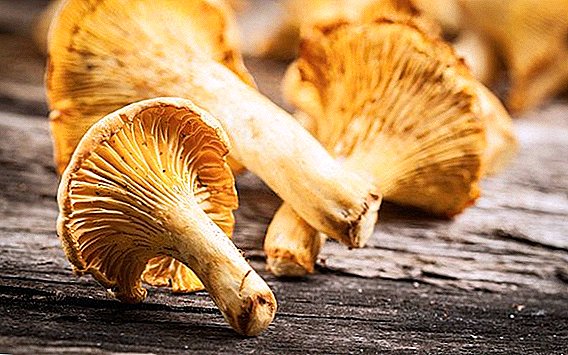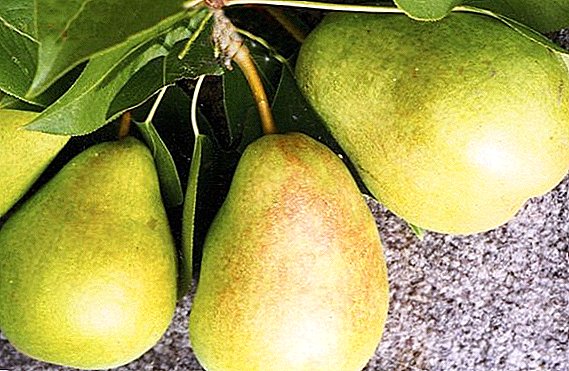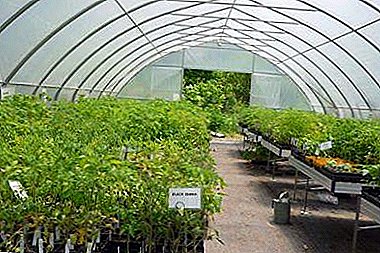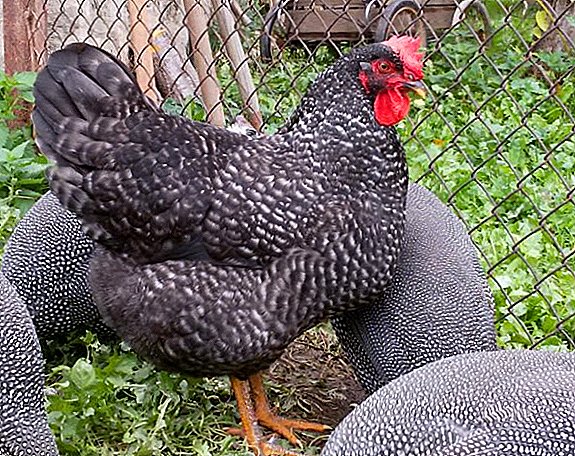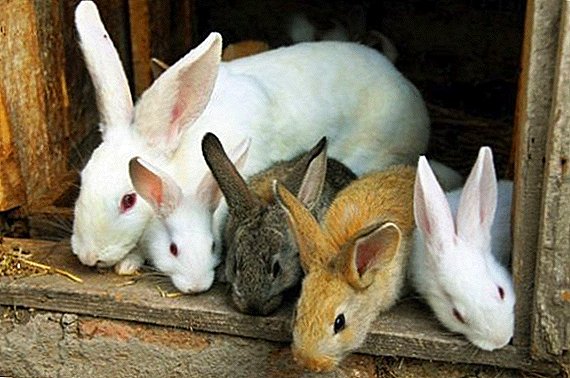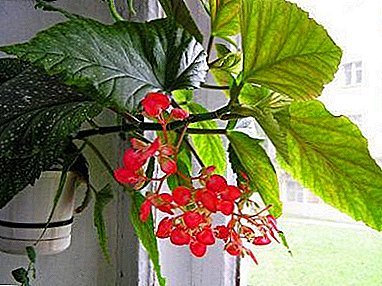
Coral begonia is popular for its long-lasting attractiveness. In growing this flower is undemanding. For its growth and development, it is sufficient to organize suitable conditions of detention.
Begonia is a common indoor flower, which is grown both in small apartments and in huge greenhouses, where the plant reaches a two-meter height. There are about 1600 species in the world, and today we will talk about one of them.
You will learn what coral begonia is, how it differs from other species, how to plant it correctly and how to get a beautiful flowering plant.
Botanical description and photo of indoor plants





Coral begonia, coralina, is a upright growing type of ornamental houseplants belonging to the Begonia family.
The leaves, having a regular arrangement, are painted in different shades of green. The width reaches 7 cm, length - 20 cm. Their leathery surface is covered with milky and silvery specks. They have a rugged and oval shape. In bright light and in the summer, their back becomes juicy crimson.
Flowers consist of 3 or 4 fused petals, which are of different color:
- orange;
- red;
- pink;
- white.
They are collected in inflorescences, similar to clusters of berries. The flowers of this type of begonias smell good and are also pleasant to the taste.
Begonia discoverer is nerd Charles Plume. While traveling to explore the Antilles in the 17th century, he saw this unusual flower. Charles Plume called this plant in honor of the governor of Haiti, Michel Begon, who allocated funds for the expedition.
We offer to watch a video about coral begonia:
Where and how to plant?
For planting coral begonia need a pot in which at the bottom there are holes. Then the excess water will not accumulate, and therefore will not lead to rotting.
At the bottom it is necessary to organize a 2-centimeter drainage layer of any material.:
- pebbles;
- broken brick;
- gravel;
- claydite.
The width of its top must be greater than the width of the bottom. It is best to take the clay, which heats up slowly and does not contain harmful impurities. It is impossible to put coral begonia plants under direct sunlight on loggias, open air and window-sills, otherwise there will be burns on the leaves.
Lighting and location
Coral begonia requires diffused light, it also feels good in shading. In winter, the flower can not be removed from the window, if it is not blowing. The optimal place is considered to be the windowsills of the eastern, western and northern sides. It is impossible to put a flower near heating devices and open window leaves. He likes warm air without wind.
The lack of light on the coral begonia is reflected negatively. It leads to slow growth and development of the plant.
Soil requirements
For planting a flower, you can buy ready-made soil mixture or mix 2 parts of ordinary garden soil and 1 part for each:
- peat;
- compost or humus;
- coarse sand.
It is important to note that gravel, foam or pieces of broken bricks can be used as drainage.
Home care
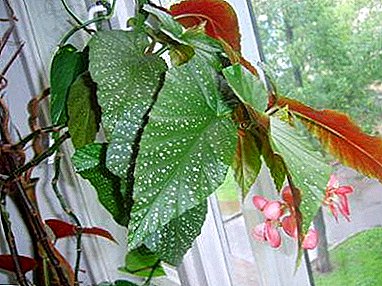 It is very important, growing coral begonia, properly water it. In the summer it needs to be done regularly and abundantly. The slightest drought can lead to the death of a flower. 2 times a month it is advised to add potassium fertilizers to water. In spring, it is also possible to use phosphate fertilizers not more often than 2 times a month as a top dressing.
It is very important, growing coral begonia, properly water it. In the summer it needs to be done regularly and abundantly. The slightest drought can lead to the death of a flower. 2 times a month it is advised to add potassium fertilizers to water. In spring, it is also possible to use phosphate fertilizers not more often than 2 times a month as a top dressing.In winter, water should be moderate. In summer, the optimum temperature is 18-24 ° C, and in winter - 15-16 ° C. Sufficient moisture and heat favorably affect the development and growth of the flower. It is recommended to moisten the space around it, but water should not be allowed to enter the leaves.
- To quickly develop new flowers, and the plant does not lose nutrients, you need to regularly clean those that have faded and dried. Provided that coral begonia is found in permeable soil, care for it will be simple. Systematic pinching of the crown contributes to the urge of the flower to tillering and the development of beautiful lateral shoots.
- A young plant at the beginning of the summer is advised to replant in a more spacious pot. But in this case, it must be borne in mind that if a large amount of land remains unused, rotting may begin. This procedure is best done the next day after the plant is poured. An adult plant is often not needed to replant. Transplantation can not be engaged in the flowering period of begonia.
- Caring for this flower includes pruning. If the bush is not formed, then the appearance will be spoiled by the stretched stems.
It is recommended to cut the shoots that appeared after the third internode. They can be used for breeding.
Common diseases and pests
Diseases and pests of begonias:
- Begonia can get a disease like gray mold. The reason is high humidity and high temperature. The disease is characterized by the appearance of white spots on the leaves, gradually turning into a plaque that covers all the sheets. They then rot and break off. If not treated, the plant will die.
- Another common coral begonia disease is bacterial spotting. This is evidenced by the presence of small watery spots on the leaf plates. This disease can not be cured, because the flower and soil will have to get rid of, and the pot must be processed.
- There are insect pests from which coral begonia most often suffers - these are scale insects and spider mites.
Breeding features
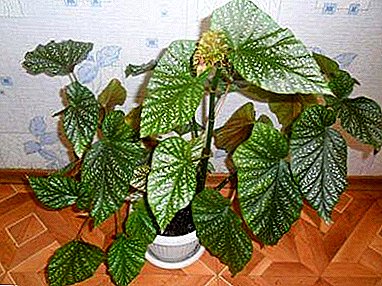 This plant can be propagated at home with the help of a 10 cm thick leaf. In order for him to put his roots put in the water or wet sand. As soon as they grow to 1.5 cm, the cuttings are transplanted into the ground, and covered with a jar to create greenhouse conditions. If you lightly sprinkle the place where the cutting touches the soil, wood ash, the plant will not catch the fungal disease.
This plant can be propagated at home with the help of a 10 cm thick leaf. In order for him to put his roots put in the water or wet sand. As soon as they grow to 1.5 cm, the cuttings are transplanted into the ground, and covered with a jar to create greenhouse conditions. If you lightly sprinkle the place where the cutting touches the soil, wood ash, the plant will not catch the fungal disease.- There is another way for coral begonia to reproduce - using a leaf. On its reverse side, it is necessary to make cuts, put on a wet substrate and cover with a film. It is systematically recommended to cut the parts with formed roots, only some leave for further growth. When transplanting should be divided rhizome. Such a procedure besides breeding will help more, and rejuvenate adult begonia.
We offer to watch a video about the features of breeding coral begonia:
Possible problems
Problems in growing begonias:
- When growing this flower, you can see that it sheds foliage. If in the winter their mass fall is marked, then it means that the room is very cold and the plant freezes. It will help increase the temperature.
- If before the leaves fall, they become colorless, it means that the coral begonia is affected by the nematode. The treatment is useless, the plant and contaminated soil must be disposed of.
- When the flower is standing in the kitchen, leaf withering can often be observed. The cause of this problem is the harmful products of gas combustion, so it must be moved to another room.
We offer to watch a video about possible problems when growing coral begonia:
Why does not bloom?
It so happens that begonia gives coral foliage, but does not bloom, it has its own reasons:
- One of them may be its young age, when the plant simply does not have time to develop before the time of its natural flowering.
- Begonias will not have flowers if they do not have enough light, therefore if you rearrange it in a more illuminated room, the situation will change.
- If the edges of the leaves are drying and there are no flowers, the air may be too dry to blame. It will help to correct the situation by increasing the humidity in the room with the help of the water tank placed near the plant.Very cold air affects the flowering of coral begonia. In such conditions, there will be no flowers. It is necessary for the plant to create a comfortable air and thermal conditions.
- If the flower gets off the schedule of periods of rest, then he will not have enough strength to re-bloom. In order for everything to return to normal, it is necessary to help the plant to correct it, namely, in summertime, begonia:
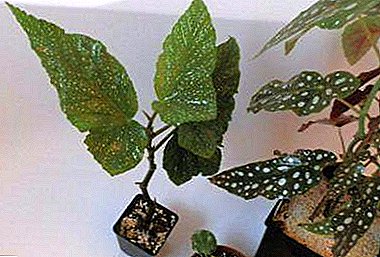 move to a dark, cool place;
move to a dark, cool place;- artificially reduce daylight hours;
- reduce watering.
After about 2 months, the flower should be gradually withdrawn from this state: to increase the light day, temperature and watering.
- Sometimes the lack of flowering is due to vitamin deficiency. Will help change the soil on a special soil, designed specifically for begonias.
- If there are pests or diseases on the plant, the plant may also not start to bloom. In this case, it is necessary to carry out appropriate treatment.
Coral begonia is a real decoration of any interior.. It refers to plants that are very responsive with proper care. If comfortable conditions are initially created, then it will long be colorful and richly bloom.


 It is very important, growing coral begonia, properly water it. In the summer it needs to be done regularly and abundantly. The slightest drought can lead to the death of a flower. 2 times a month it is advised to add potassium fertilizers to water. In spring, it is also possible to use phosphate fertilizers not more often than 2 times a month as a top dressing.
It is very important, growing coral begonia, properly water it. In the summer it needs to be done regularly and abundantly. The slightest drought can lead to the death of a flower. 2 times a month it is advised to add potassium fertilizers to water. In spring, it is also possible to use phosphate fertilizers not more often than 2 times a month as a top dressing. This plant can be propagated at home with the help of a 10 cm thick leaf. In order for him to put his roots put in the water or wet sand. As soon as they grow to 1.5 cm, the cuttings are transplanted into the ground, and covered with a jar to create greenhouse conditions. If you lightly sprinkle the place where the cutting touches the soil, wood ash, the plant will not catch the fungal disease.
This plant can be propagated at home with the help of a 10 cm thick leaf. In order for him to put his roots put in the water or wet sand. As soon as they grow to 1.5 cm, the cuttings are transplanted into the ground, and covered with a jar to create greenhouse conditions. If you lightly sprinkle the place where the cutting touches the soil, wood ash, the plant will not catch the fungal disease. move to a dark, cool place;
move to a dark, cool place;